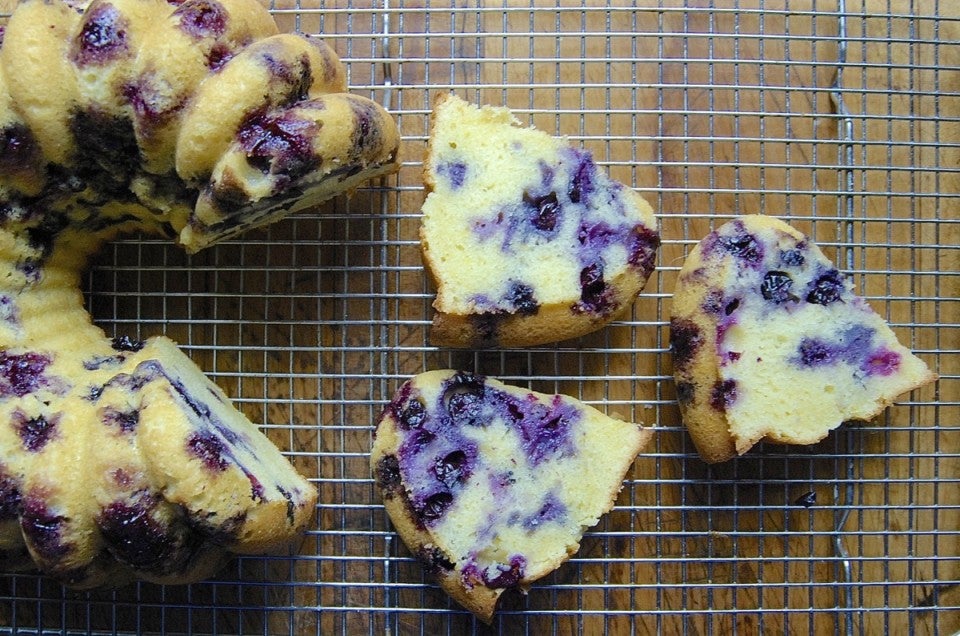


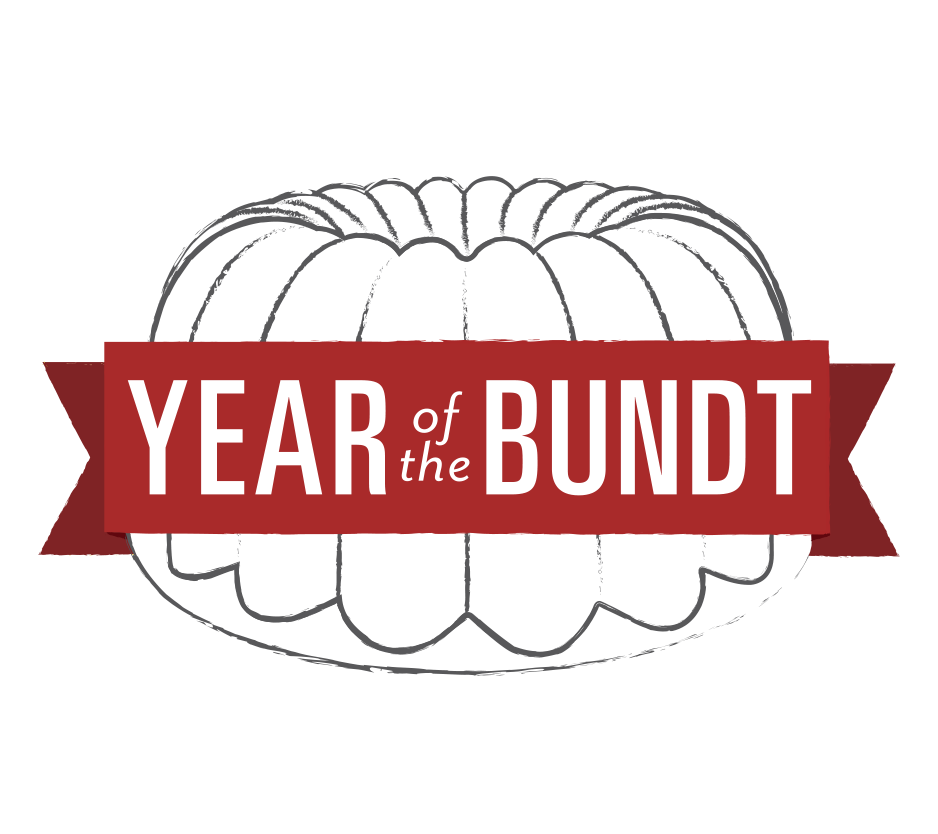
Have you ever made a Bundt cake, cut a slice, looked at that large expanse of blank real estate (i.e., plain cake), and thought, “Hmmm, I could have added butterscotch chips.” Or blueberries. Or chopped pecans. Bundt cake mix-ins are a great way to add visual excitement and complementary flavors to your favorite cake; but there’s a trick to using them.
Actually several tricks. Maybe you’ve had this experience: you take your favorite yellow sheet cake recipe and decide to bake it in a Bundt pan for a change. “And while I’m at it, how about making it a chocolate chip cake?” You stir in a couple of cups of chips, bake, carefully turn the pan over — and lift it off to reveal a yellow cake crowned with a messy glop of semi-melted chocolate.
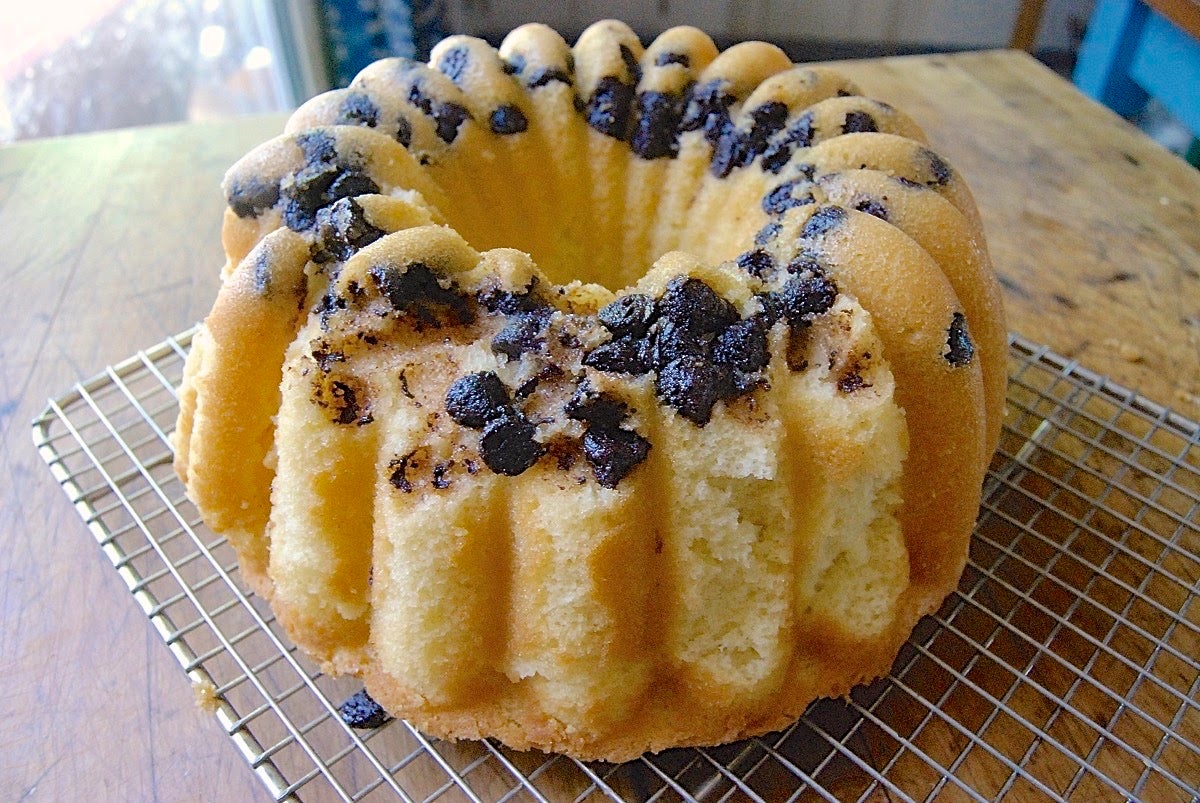
What happened to your vision of cake studded with chocolate chips? Simply put, it fell victim to one of the basics of physics: gravity. The chips sank to the bottom of the pan as the cake baked. Not a pretty picture.
When using your favorite Bundt cake mix-ins, how can you set yourself up for success, rather than unhappy failure? Here are 10 quick tips for adding flavor and interest to Bundt cakes by using mix-ins.
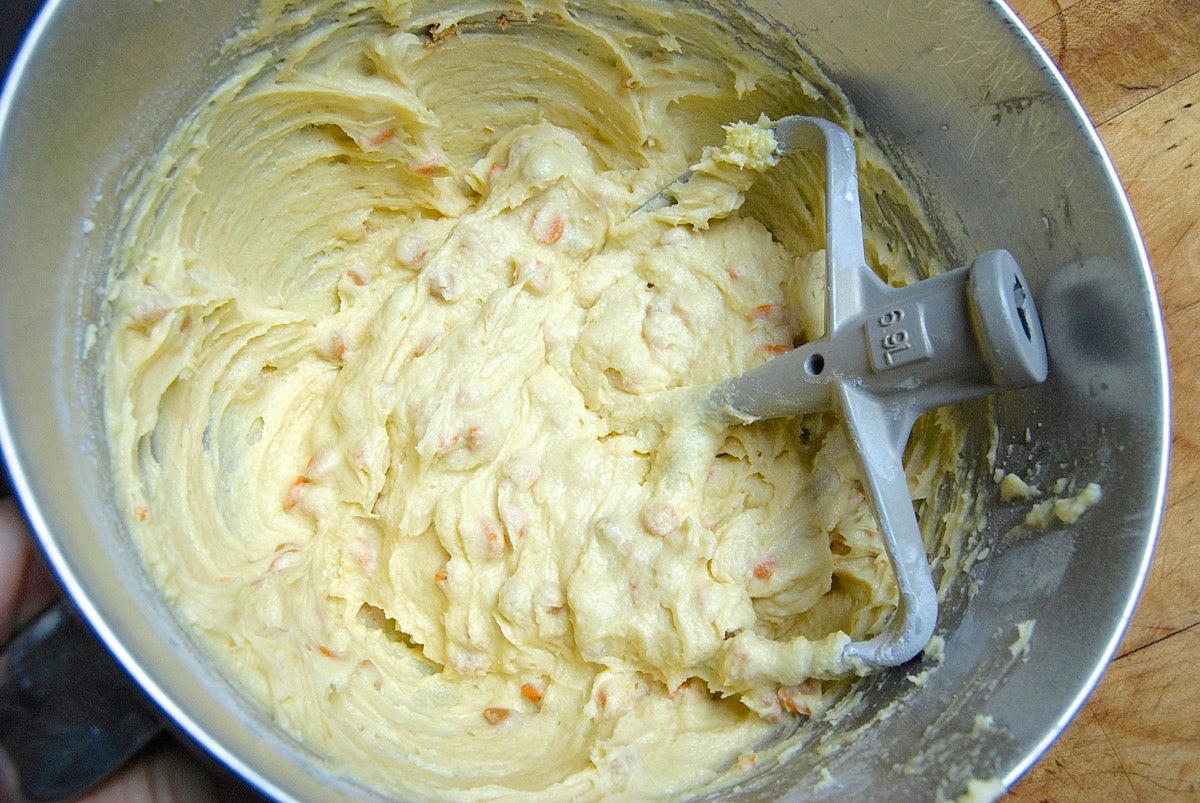
Makes sense, right? The thicker the batter, the less likely your mix-ins will sink. Some cake recipes start with batter thin enough to pour easily; others, with thick batter that needs to be scooped into the pan, not poured. Choose the latter for best results: Lemon Bliss Cake and Classic Vanilla Bundt Cake are two good examples of thicker-batter Bundt cakes.
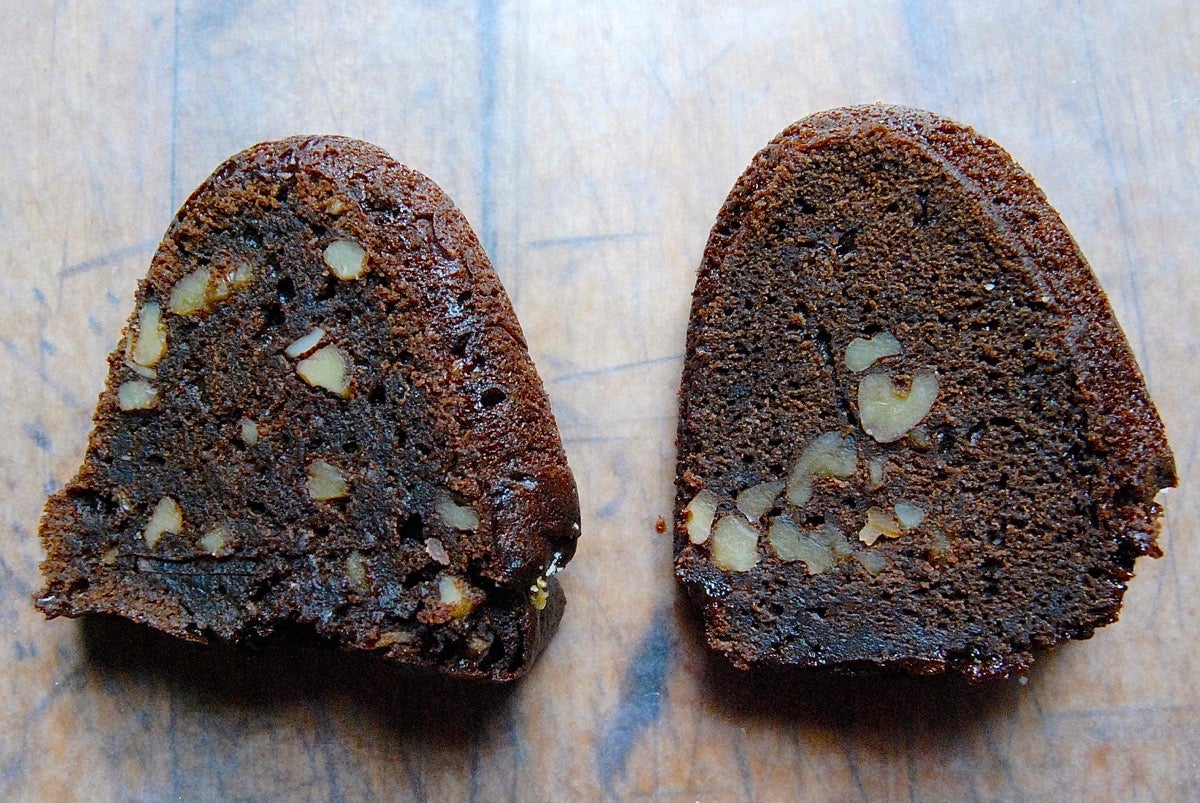
For the best chance at keeping those chips, nuts, and berries where they belong — suspended in lovely symmetry throughout your baked cake — turn to Instant ClearJel. Unlike cornstarch, which needs to be cooked before it thickens, this starch-based product thickens thin batters instantly — and lends added “holding power” to thicker batters.
I’ve had success using 1/4 cup ClearJel with thin batters, and 2 tablespoons ClearJel with thicker batters. To prevent lumps, combine the ClearJel with an equal amount of some of the sugar from the recipe before adding. If the recipe calls for creaming butter with sugar, hold back the ClearJel/sugar until the end of the creaming process before beating it in.
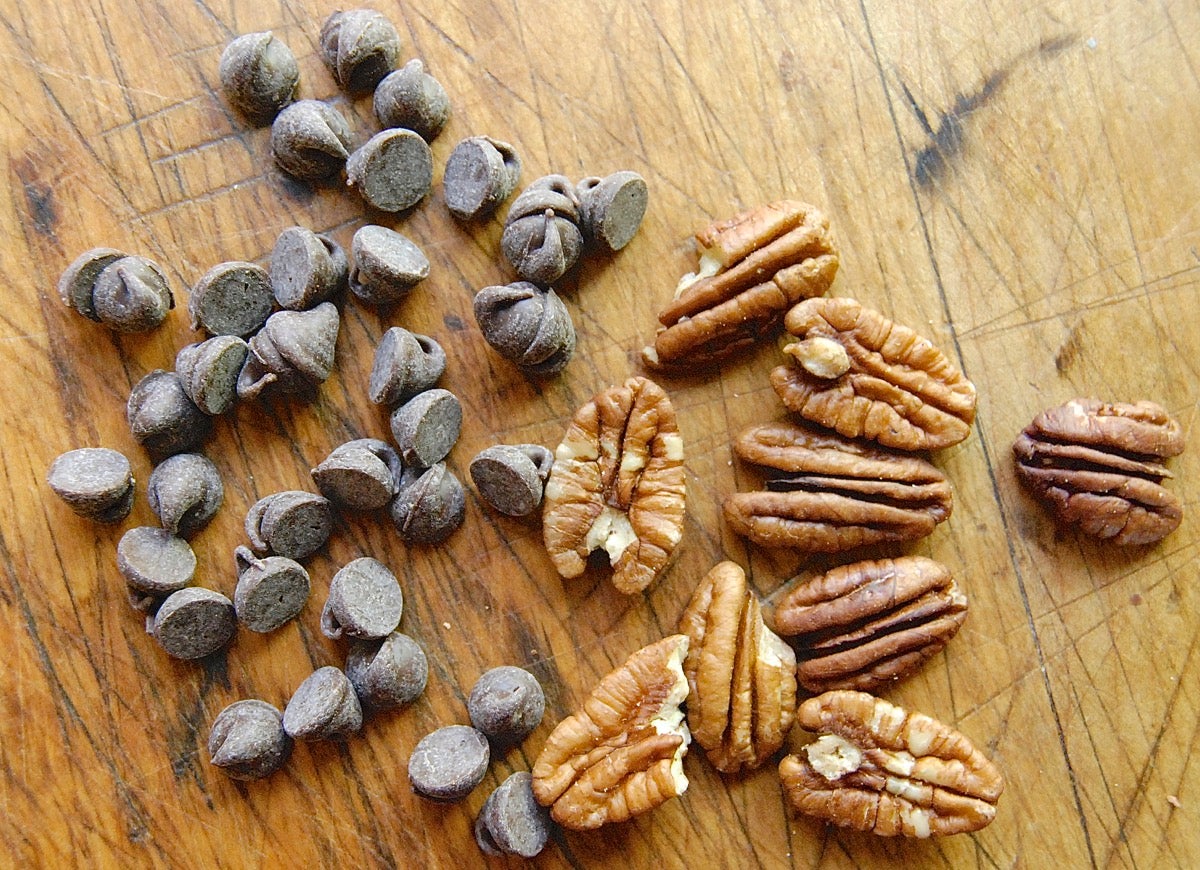
Chocolate chips weigh 6 ounces per cup. Pecans, 4 ounces per cup. Chocolate chips are smooth and round; pecan halves, larger and flatter.
Q: Which do you think is more likely to sink to the bottom of the pan? A: The heavier, more streamlined chocolate chips will sink more readily than the pecan halves. Thus chocolate chips probably aren't a good choice for thin-batter cakes.
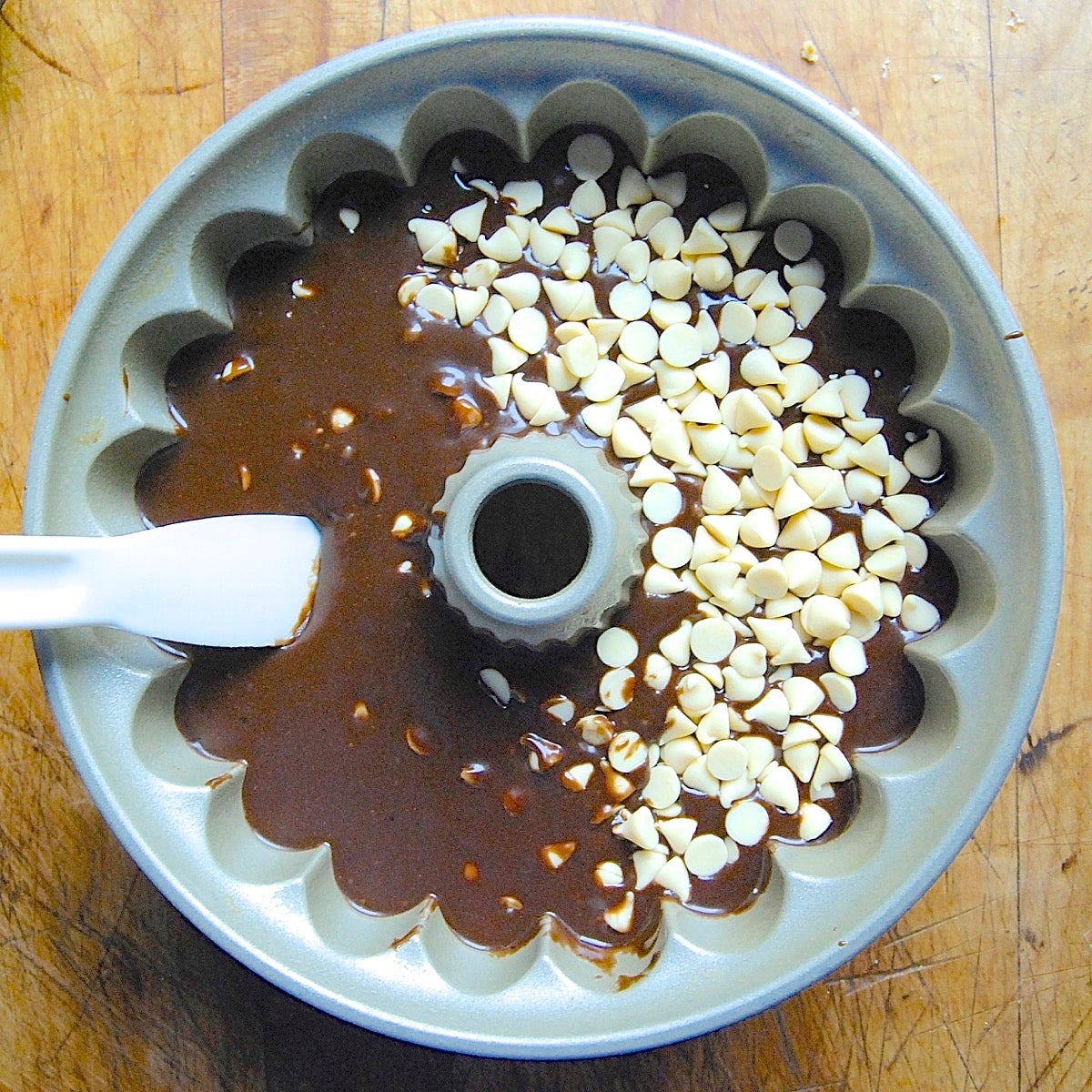
If you suspect your mix-ins might sink — if the batter’s just on the edge of being thick enough, for instance — take this step to help keep them in place. Pour batter into the pan, sprinkle the mix-ins on top, and use a spatula to just barely submerge them in that top layer of batter. With any luck, some will stay near the top while others sink.
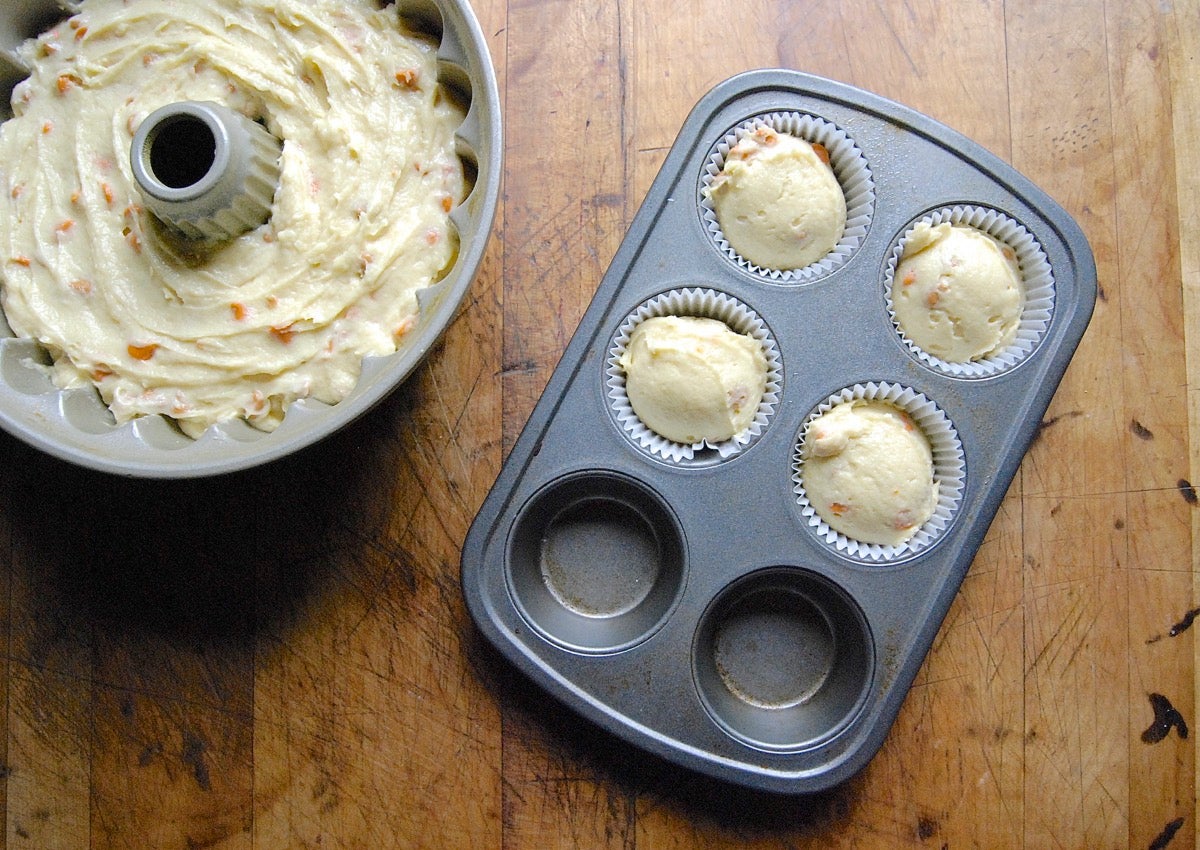
If you’re adding 2 cups of cinnamon chips to a cake recipe whose batter already filled your Bundt pan nicely, don’t fool yourself that those extra 2 cups won’t make a difference. Always leave at least 1 1/4” of free space at the top of your Bundt pan (for more, see our blog on Bundt pan sizes). And use any extra batter to make cupcakes.
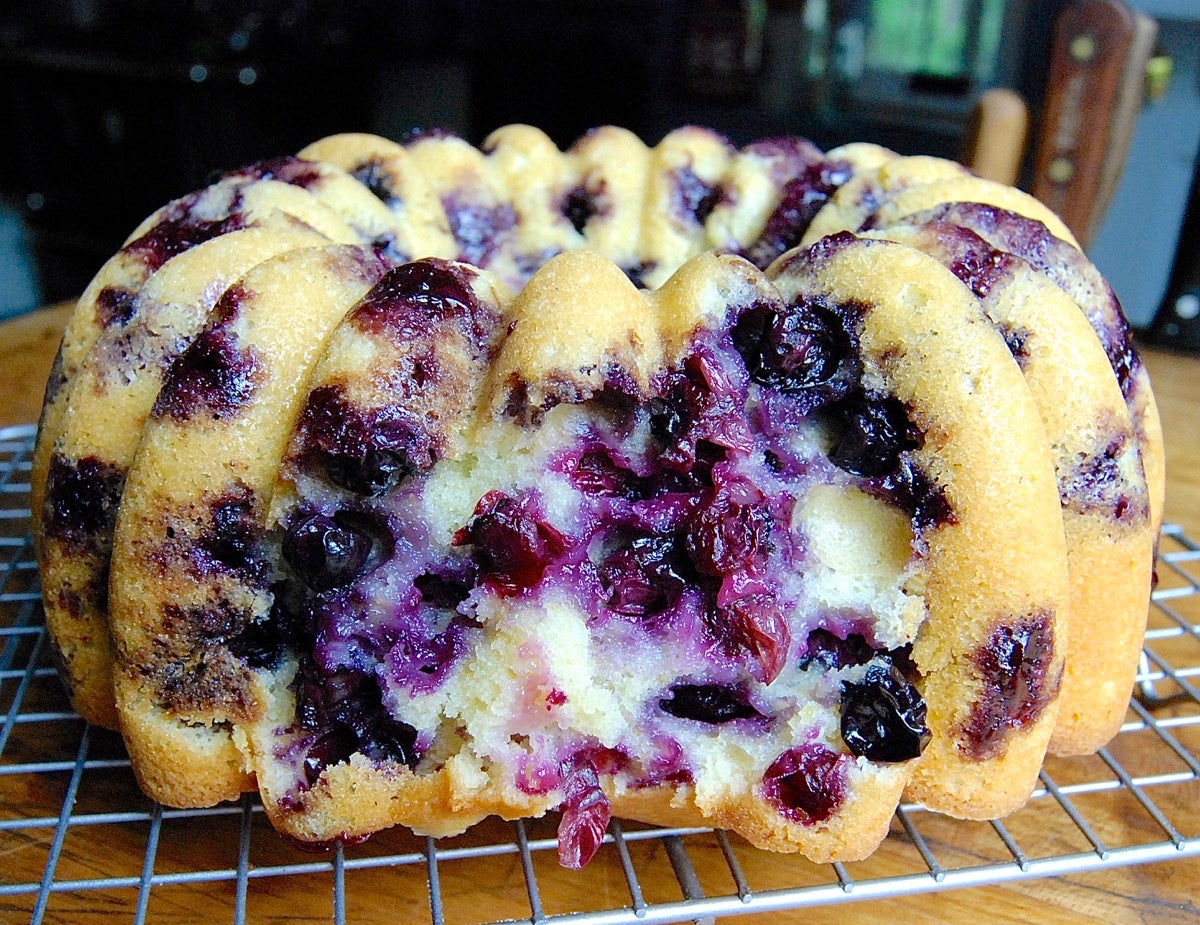
About 1 1/2 to 2 cups mix-ins are sufficient for a standard-size Bundt cake. More than this makes it difficult to slice the cake easily, and exacerbates any potential problems with sticking chips or oozing fruit.
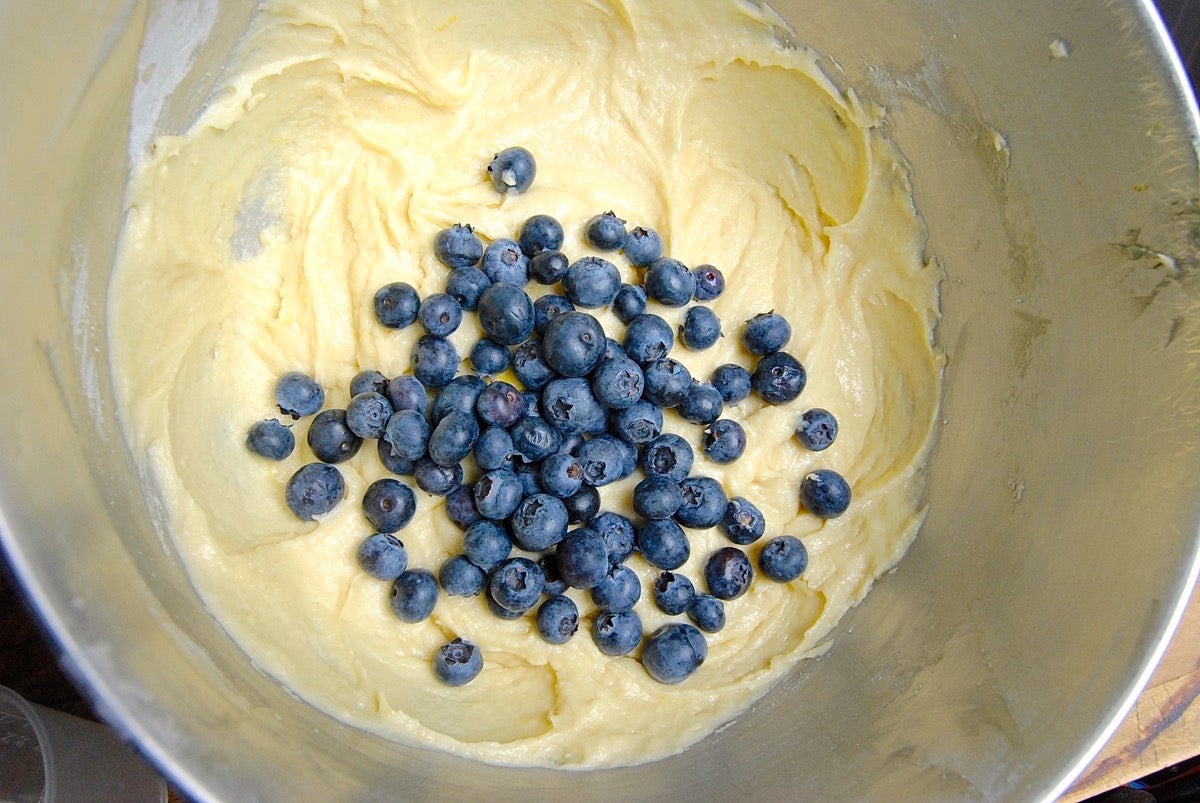
Fresh fruit can break down and bleed into a baking cake, creating sodden pockets of soft fruit and juice. For best results, use fresh (not frozen) firm berries (blueberries), or chopped firm fruit (apples, pears, hard peaches).
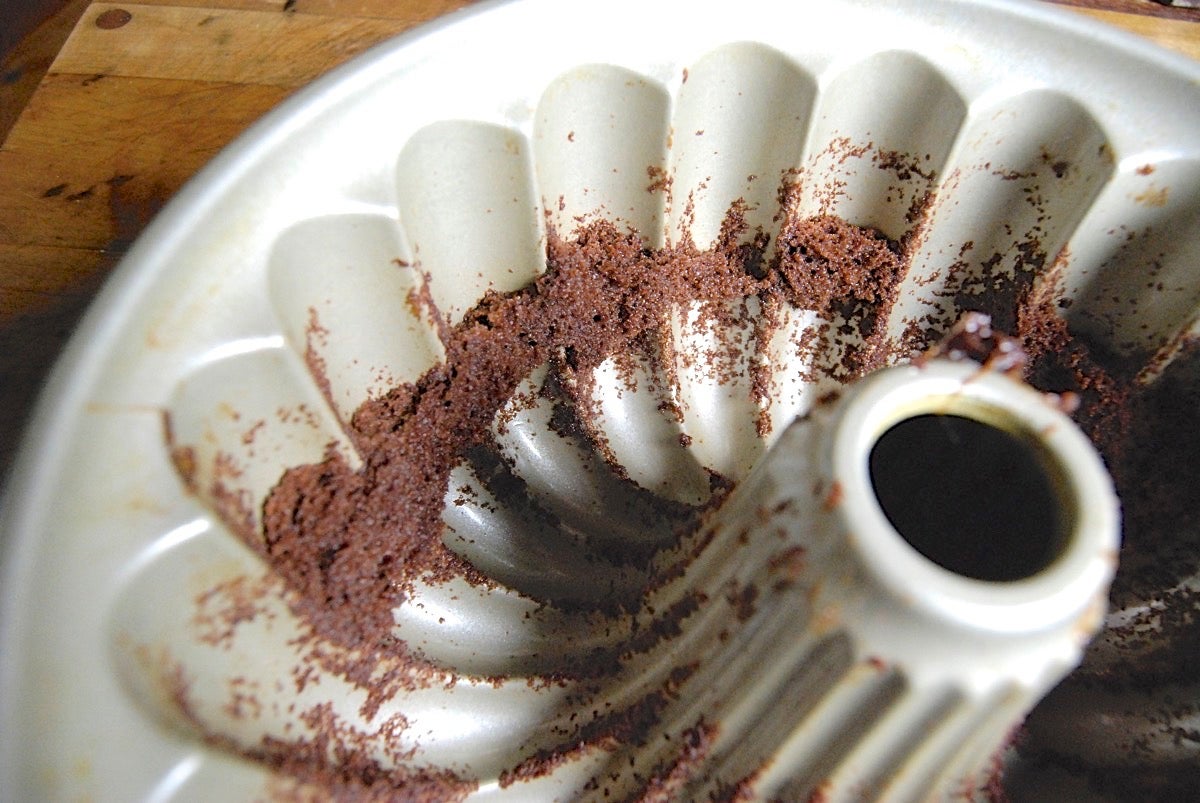
Bundt cake mix-ins may make it more difficult to get the cake out of the pan without tearing, especially if those mix-ins melt and become sticky (think chocolate). It helps to get the cake out of the pan before any sticky bits on the crust turn to permanent glue. Once you take the cake out of the oven, loosen its edges, turn it over onto a rack, lift the pan off, and pray for success. For more, see our post: How to prevent Bundt cakes from sticking.
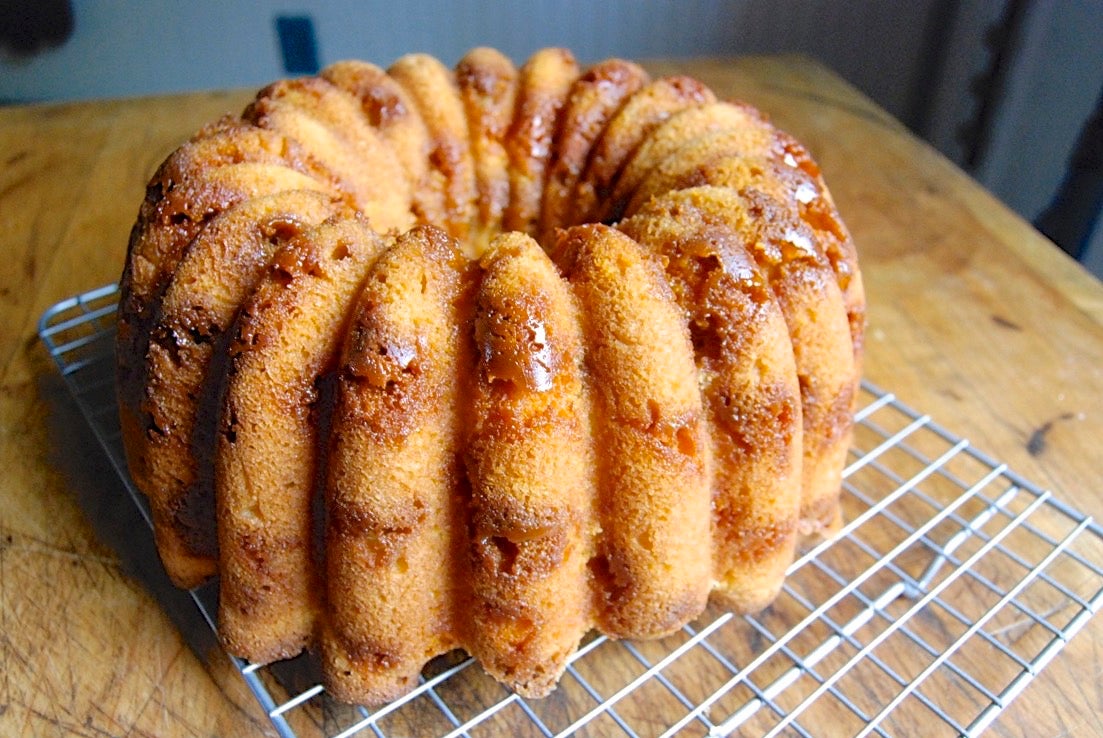
If you’re tasked with coming up with a gala Bundt cake for your best friend’s anniversary party, save yourself some anxiety by testing the recipe on your family first. Do the mix-ins stay in place? Were you able to get the cake out of the pan without too much trouble? And, most importantly — does it taste good? You’ll thank yourself for nailing the process before the big day arrives.
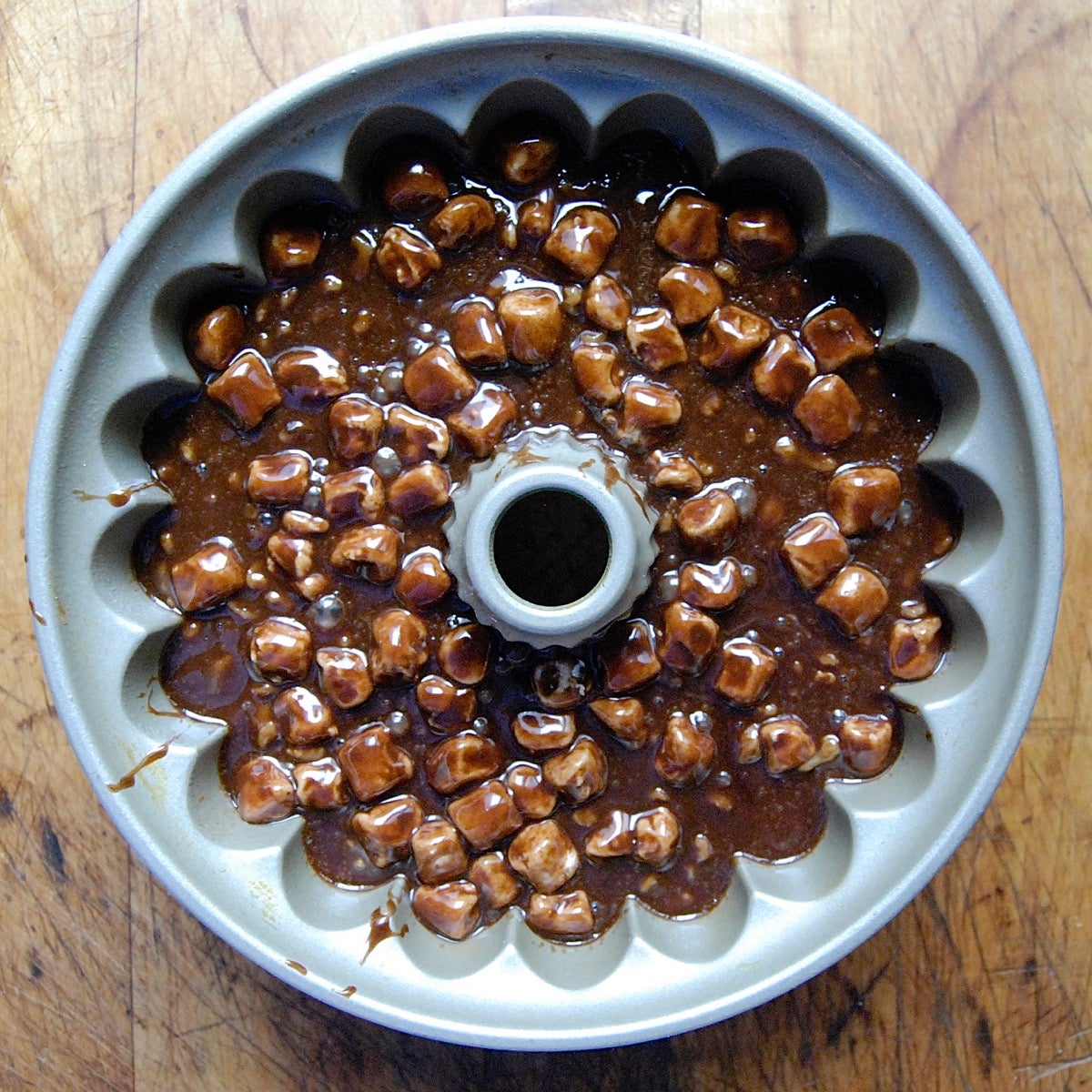
Tempting as it is to create a chocolate marshmallow cake, mini-marshmallows A) dissolve into a gooey mess as they bake, and B) are so light that they float atop the baking batter. Result? Chocolate cake with a sodden layer of marshmallow goo at the bottom. Yes, experience was my teacher here.
Want to share your special tips for Bundt cake success? Please post them in comments, below.

